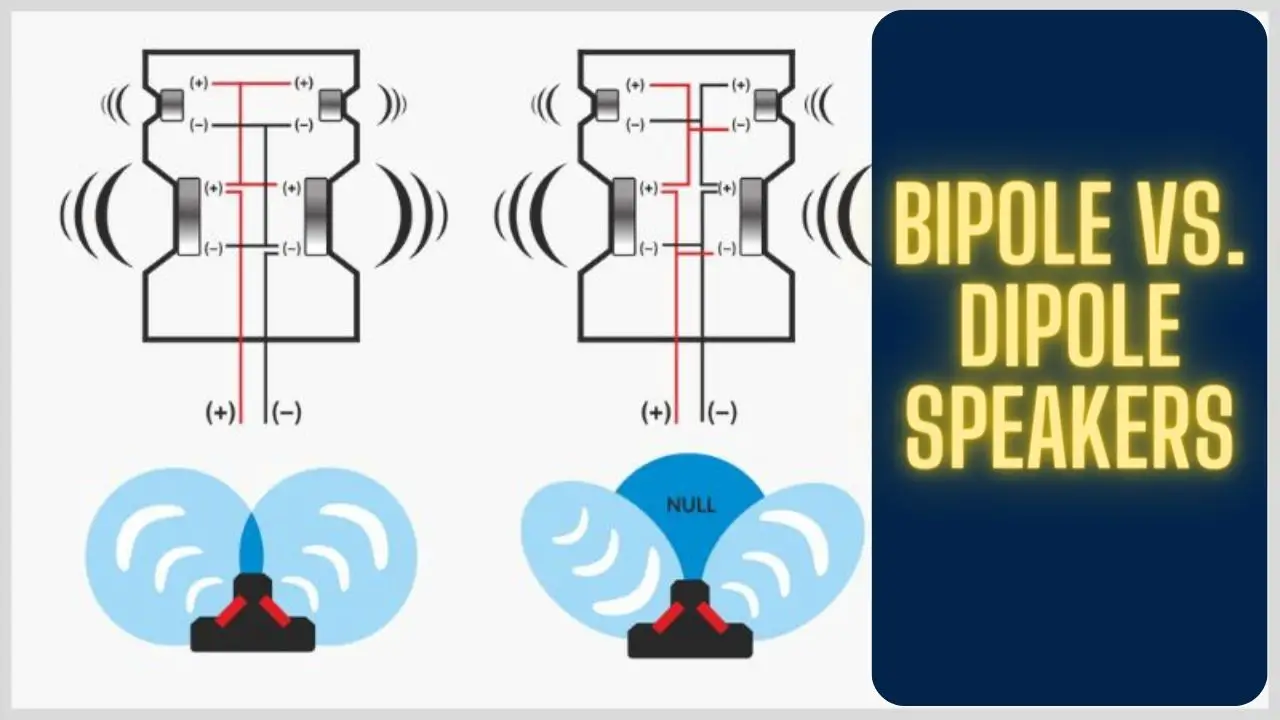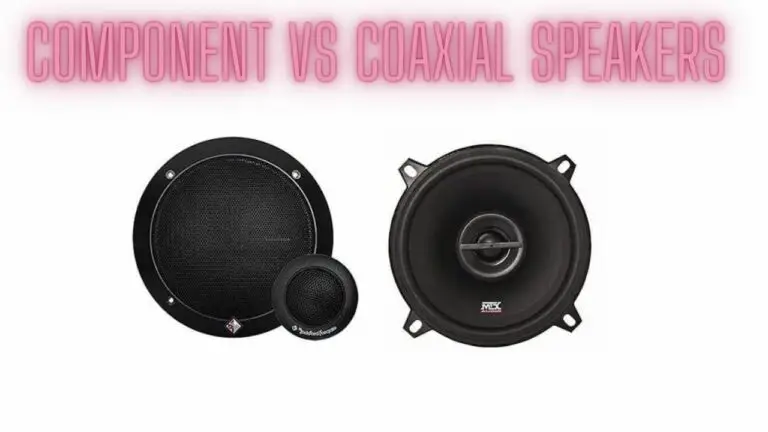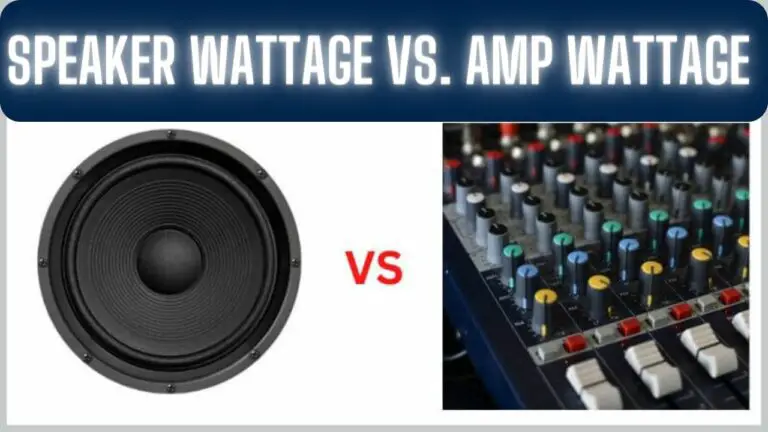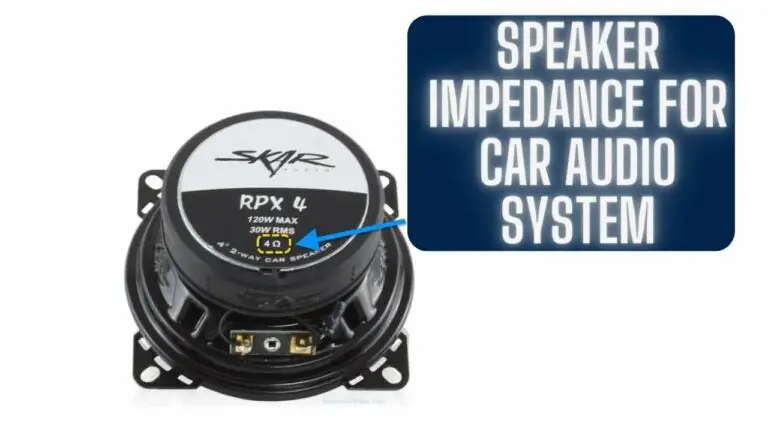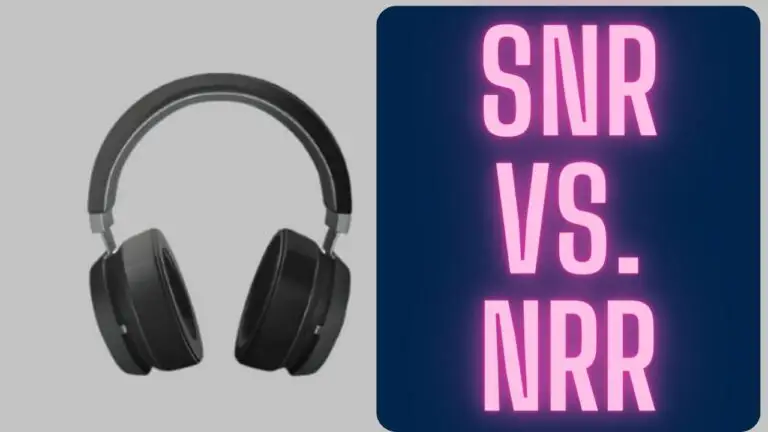Bipole vs. Dipole Speakers: Understanding the Key Differences
Introduction
In the realm of audio reproduction, the choice of speakers can significantly impact the listening experience, particularly in home theater setups and surround sound systems. Two common configurations that offer distinct sound dispersion characteristics are bipole and dipole speakers. Understanding the differences between these speaker types is essential for achieving immersive and accurate audio playback.
Bipole speakers and dipole speakers operate on different principles of sound dispersion, each with its own advantages and ideal applications. In this guide, we will delve into the intricacies of bipole and dipole speakers, exploring their design, functionality, advantages, disadvantages, and optimal use cases.
By providing a comprehensive comparison of bipole and dipole speakers, this guide aims to equip audio enthusiasts, home theater enthusiasts, and professionals with the knowledge needed to make informed decisions when selecting speakers for their audio setups. Whether you’re seeking enveloping surround sound for cinematic experiences or balanced audio dispersion for music enjoyment, understanding the nuances of bipole and dipole speakers is crucial for achieving the desired sonic immersion and fidelity.
Bipole Speakers:
Bipole speakers are a type of loudspeaker designed to radiate sound in multiple directions simultaneously. Unlike traditional monopole speakers that emit sound primarily in a single direction, bipole speakers disperse sound from both the front and rear panels. This unique design creates a diffuse and enveloping sound field, ideal for immersive audio experiences in home theater setups and surround sound systems.
Description of Bipole Speakers:
- Bipole speakers typically consist of two sets of drivers mounted on opposite sides of the speaker enclosure.
- The front and rear drivers are wired out of phase with each other, causing them to produce sound waves that cancel each other out in the lateral direction but reinforce each other in the forward and rearward directions.
- Bipole speakers often feature a switch that allows users to toggle between bipole and dipole operation, providing flexibility in adjusting the sound dispersion characteristics to suit different room acoustics and preferences.
How Bipole Speakers Work:
- When operating in bipole mode, both sets of drivers emit sound in phase with each other, resulting in a broad and diffuse soundstage with minimal localization effects.
- Bipole speakers create a spacious and immersive listening environment, making them well-suited for surround sound applications where envelopment and immersion are desired.
Advantages of Bipole Speakers:
- Immersive Surround Sound: Bipole speakers provide a spacious and enveloping sound field, enhancing the realism and immersion of surround sound systems.
- Minimized Localization: By emitting sound from both the front and rear panels, bipole speakers reduce the localization of sound sources, creating a seamless audio experience.
- Flexible Placement: Bipole speakers can be placed on sidewalls or rear walls to complement the primary front speakers, offering versatility in speaker placement and room layout.
Disadvantages of Bipole Speakers:
- Less Precise Imaging: Due to the diffuse sound dispersion, bipole speakers may sacrifice some imaging precision compared to monopole or dipole speakers, affecting the localization of individual sound sources.
- Room Acoustics Dependence: The effectiveness of bipole speakers is influenced by room acoustics, including wall reflections and room dimensions, requiring careful placement and calibration for optimal performance.
Applications of Bipole Speakers:
- Home Theater Systems: Bipole speakers are commonly used as surround speakers in home theater setups to create an immersive and enveloping surround sound experience.
- Multi-channel Audio: In multi-channel audio systems such as Dolby Atmos and DTS:X, bipole speakers can enhance the realism and spaciousness of the soundstage, contributing to a cinematic listening experience.
Bipole speakers offer a compelling solution for achieving immersive surround sound reproduction, making them a popular choice for home theater enthusiasts and audio professionals seeking to create captivating audio environments. By understanding the design, functionality, and applications of bipole speakers, audio enthusiasts can harness their potential to elevate their listening experiences to new heights.
Dipole Speakers
Dipole speakers are a type of loudspeaker designed to radiate sound in two opposite directions simultaneously. Unlike traditional monopole speakers that emit sound primarily in a single direction, dipole speakers disperse sound from both the front and rear panels. This unique design creates a diffuse and spacious sound field, ideal for immersive audio experiences in home theater setups and surround sound systems.
Description of Dipole Speakers:
- Dipole speakers typically consist of two sets of drivers mounted on opposite sides of the speaker enclosure.
- The front and rear drivers are wired out of phase with each other, causing them to produce sound waves that cancel each other out in the lateral direction but reinforce each other in the forward and rearward directions.
- Dipole speakers are often used as surround speakers in home theater setups, positioned on sidewalls or rear walls to complement the primary front speakers.
How Dipole Speakers Work:
- When operating in dipole mode, dipole speakers emit sound waves from both the front and rear panels simultaneously, creating a diffuse and spacious soundstage.
- Dipole speakers are designed to minimize sound localization effects, creating a more immersive listening experience where individual sound sources are less perceptible.
Advantages of Dipole Speakers:
- Immersive Surround Sound: Dipole speakers provide a spacious and enveloping sound field, enhancing the realism and immersion of surround sound systems.
- Minimized Localization: By emitting sound from both the front and rear panels, dipole speakers reduce the localization of sound sources, creating a seamless audio experience.
- Flexible Placement: Dipole speakers can be placed on sidewalls or rear walls to complement the primary front speakers, offering versatility in speaker placement and room layout.
Disadvantages of Dipole Speakers:
- Less Precise Imaging: Due to the diffuse sound dispersion, dipole speakers may sacrifice some imaging precision compared to monopole speakers, affecting the localization of individual sound sources.
- Room Acoustics Dependence: The effectiveness of dipole speakers is influenced by room acoustics, including wall reflections and room dimensions, requiring careful placement and calibration for optimal performance.
Applications of Dipole Speakers:
- Home Theater Systems: Dipole speakers are commonly used as surround speakers in home theater setups to create an immersive and enveloping surround sound experience.
- Multi-channel Audio: In multi-channel audio systems such as Dolby Atmos and DTS:X, dipole speakers can enhance the realism and spaciousness of the soundstage, contributing to a cinematic listening experience.
Dipole speakers offer a compelling solution for achieving immersive surround sound reproduction, making them a popular choice for home theater enthusiasts and audio professionals seeking to create captivating audio environments. By understanding the design, functionality, and applications of dipole speakers, audio enthusiasts can harness their potential to elevate their listening experiences to new heights.
Differences between Bipole vs. Dipole Speakers
Bipole and dipole speakers are two distinct types of surround sound speakers used in home theater and audio setups. They have different designs and characteristics that result in unique sound dispersion patterns. Here are the key differences between bipole and dipole speakers:
1. Sound Dispersion:
- Bipole Speakers:
- Emit sound in two directions simultaneously—forward and backward.
- Create a diffuse and ambient sound field, filling the room with sound.
- Ideal for enveloping listeners in a broader soundstage, making them well-suited for surround sound applications.
- Dipole Speakers:
- Also emit sound in two directions, but the soundwaves are out of phase with each other.
- Result in a null point or “dead zone” directly in front of the speaker, where sound cancellation occurs.
- Create a diffuse sound field that reduces the perception of sound coming from specific speakers, enhancing immersion.
2. Localization of Sound:
- Bipole Speakers:
- While they create a more enveloping soundstage, they can still provide a sense of directionality and allow listeners to discern the direction of sound sources.
- Balance between immersion and localization, making them suitable for various audio content.
- Dipole Speakers:
- Designed to minimize speaker localization, making it challenging for listeners to pinpoint the source of specific audio effects.
- Ideal for creating a sense of spaciousness and immersion, particularly in home theater settings.
3. Application:
- Bipole Speakers:
- Commonly used as rear or surround speakers in home theater systems.
- Suitable for enhancing the surround sound experience in movies and gaming.
- Dipole Speakers:
- Preferred for creating enveloping and immersive soundscapes in home theater setups.
- Excellent for minimizing speaker localization and enhancing immersion.
4. Speaker Placement:
- Bipole Speakers:
- Typically placed on the sides or rear walls of a room, a few feet above ear level and slightly behind the listening area.
- Placement is crucial for achieving the desired sound dispersion.
- Dipole Speakers:
- Positioned in a similar manner to bipole speakers, often on the side or rear walls, and also slightly above ear level.
- Placement is essential for creating the desired diffuse sound field.
5. Suitability for Different Audio Content:
- Bipole Speakers:
- Offer a balance between ambient effects and some degree of localization.
- Suitable for a range of audio content, including movies and music.
- Dipole Speakers:
- Designed to minimize speaker localization and are excellent for creating enveloping soundscapes.
- Well-suited for movies and gaming, particularly when a sense of immersion is a priority.
6. Null Point:
- Bipole Speakers:
- Do not have a null point like dipole speakers, as they emit sound in both directions in phase.
- Dipole Speakers:
- Create a null point directly in front of the speaker, where sound cancellation occurs due to the out-of-phase soundwaves.
Choosing Between Bipole and Dipole Speakers
Selecting between bipole and dipole speakers depends on various factors including personal preferences, room acoustics, and the desired listening experience. Here are some considerations to help you decide:
- Room Size and Layout:
- Bipole Speakers: Ideal for medium to large rooms where a diffuse sound field is desired. Bipole speakers can provide a more uniform sound distribution in larger spaces, filling the room with immersive surround sound.
- Dipole Speakers: Well-suited for smaller to medium-sized rooms with reflective surfaces. Dipole speakers can help minimize the effects of room reflections and create a spacious soundstage in confined spaces.
- Listening Preferences:
- Bipole Speakers: If you prefer a more enveloping and diffuse sound field with minimal localization of sound sources, bipole speakers may be the preferred choice. They offer a sense of immersion ideal for movie watching and gaming.
- Dipole Speakers: If you prioritize a seamless and spacious soundstage with reduced localization effects, dipole speakers may be more suitable. They create a more natural and open listening experience, ideal for music enthusiasts.
- Room Acoustics:
- Bipole Speakers: Effective in rooms with minimal wall reflections or absorptive surfaces. Bipole speakers rely on reflections to create a diffuse sound field, so they may not perform optimally in highly absorptive environments.
- Dipole Speakers: Beneficial in rooms with reflective surfaces or irregular shapes. Dipole speakers can help mitigate the effects of room reflections and create a more balanced acoustic environment.
- Surround Sound System Configuration:
- Bipole Speakers: Commonly used as side or rear surround speakers in home theater setups. Bipole speakers can enhance the envelopment and immersion of surround sound systems, providing a seamless audio experience.
- Dipole Speakers: Also suitable for side or rear surround positions in surround sound systems. Dipole speakers offer similar benefits to bipole speakers in terms of creating a spacious soundstage and immersive listening experience.
- Personal Testing and Evaluation:
- Consider auditioning both bipole and dipole speakers in your own listening environment to determine which type best suits your preferences and acoustic conditions.
- Pay attention to factors such as soundstage width, depth, imaging precision, and overall tonal balance when comparing bipole and dipole speakers.
Ultimately, the choice between bipole and dipole speakers comes down to personal preferences and the specific requirements of your listening environment. Both types offer unique advantages and can contribute to a rewarding audio experience when integrated into a well-designed surround sound system. By considering factors such as room size, acoustics, and listening preferences, you can make an informed decision that enhances your enjoyment of music, movies, and other audio content.
Installation and Setup Tips
Proper installation and setup are crucial for optimizing the performance of bipole and dipole speakers in your audio system. Here are some tips to help you install and set up your speakers effectively:
- Placement Considerations:
- Bipole Speakers: Position bipole speakers on side walls or rear walls, slightly above ear level when seated, to create a diffuse and enveloping surround sound field. Maintain some distance from the primary listening area to allow for proper sound dispersion.
- Dipole Speakers: Place dipole speakers on side walls or rear walls, at ear level or slightly above, to achieve a spacious and immersive soundstage. Ensure that there are no obstructions blocking the sound waves from reaching the listening area.
- Spacing and Angling:
- Space bipole and dipole speakers evenly along the walls to create a balanced surround sound experience. Maintain consistent spacing between speakers and avoid placing them too close to corners or furniture.
- Angle the speakers slightly inward toward the primary listening area to optimize sound coverage and imaging. Experiment with different angles to find the optimal positioning for your listening environment.
- Room Acoustic Treatment:
- Consider implementing acoustic treatments such as absorptive panels, diffusers, and bass traps to optimize room acoustics and minimize unwanted reflections or resonances.
- Place acoustic panels strategically to address primary reflection points and improve overall sound clarity and definition.
- Speaker Wiring and Connection:
- Ensure that the speakers are properly wired and connected to the amplifier or receiver according to the manufacturer’s instructions. Use high-quality speaker cables of appropriate gauge to minimize signal loss and interference.
- Check for proper polarity and phase alignment to ensure that the speakers are in phase with each other and with the rest of the audio system.
- Calibration and Testing:
- Use a calibration microphone and room correction software, if available, to optimize speaker placement and acoustic performance. Follow the calibration process provided by your amplifier or receiver to achieve accurate audio reproduction.
- Conduct sound tests and listening evaluations to fine-tune speaker placement, angles, and settings for optimal sound quality and balance.
- Room Layout and Furniture Arrangement:
- Consider the layout of your room and the placement of furniture when positioning bipole and dipole speakers. Avoid placing large objects or furniture between the speakers and the primary listening area, which can obstruct sound waves and degrade performance.
- Experiment with different furniture arrangements to optimize speaker placement and achieve the desired acoustic results.
- Safety Precautions:
- Ensure that bipole and dipole speakers are securely mounted or placed to prevent accidental tipping or falling.
- Use appropriate mounting hardware and follow manufacturer recommendations for wall mounting or placement on stands to ensure stability and safety.
By following these installation and setup tips, you can maximize the performance of your bipole and dipole speakers and create a captivating audio experience in your home theater or surround sound system. Experiment with different configurations and settings to find the optimal setup for your listening environment and preferences.
Bipole vs. Dipole Speakers FAQS
What is the primary difference between bipole and dipole speakers?
- The primary difference lies in their sound dispersion patterns. Bipole speakers emit sound in two directions simultaneously (forward and backward), while dipole speakers emit sound in two directions out of phase, creating a null point in front of the speaker.
What is the purpose of bipole speakers?
- Bipole speakers are designed to create a diffuse and ambient sound field, making them ideal for surround sound applications in home theaters. They enhance the sense of immersion and envelopment.
What is the purpose of dipole speakers?
- Dipole speakers are intended to minimize speaker localization and create a diffuse sound field, enhancing the sense of spaciousness and immersion in surround sound setups, particularly in home theaters.
Can bipole speakers be used as rear surround speakers in a home theater?
- Yes, bipole speakers are commonly used as rear or surround speakers in home theater systems. They contribute to a more enveloping audio experience.
Can dipole speakers be used for music listening, or are they primarily for movies and gaming?
- Dipole speakers can be used for various audio content, including music, but they are particularly well-suited for movies and gaming when creating a sense of immersion is a priority.
Do bipole speakers have a null point like dipole speakers?
- No, bipole speakers do not have a null point. They emit sound in both directions in phase, resulting in a more diffuse but not completely canceled sound in front of the speaker.
How should I position bipole and dipole speakers for optimal performance?
- Both types of speakers are typically placed on the side or rear walls of a room, slightly above ear level and behind the listening area. Proper placement is essential to achieve the desired sound dispersion and immersion.
Can I use a combination of bipole and dipole speakers in my home theater setup?
- Yes, it’s possible to use a combination of both types of speakers in a home theater system. For example, you can use bipole or dipole speakers for the rear or surround channels and conventional monopole speakers for the front and center channels.
Are bipole and dipole speakers suitable for all room sizes?
- The suitability of these speakers can depend on room size and acoustics. In larger rooms, they can enhance the sense of space, but proper placement and calibration are crucial.
Can I use bipole or dipole speakers with an AV receiver?
Yes, both types of speakers can be used with AV receivers. However, it’s important to configure the receiver’s settings to match the speaker type (bipole or dipole) for optimal performance.
Conclusion
In summary, bipole and dipole speakers have distinct sound dispersion patterns and are suited for different audio experiences. Bipole speakers strike a balance between ambient effects and localization, making them versatile for various content. Dipole speakers are designed to minimize speaker localization, prioritizing immersion and envelopment, making them ideal for surround sound setups in home theaters. The choice between the two depends on your personal preferences and the specific goals of your audio system.

